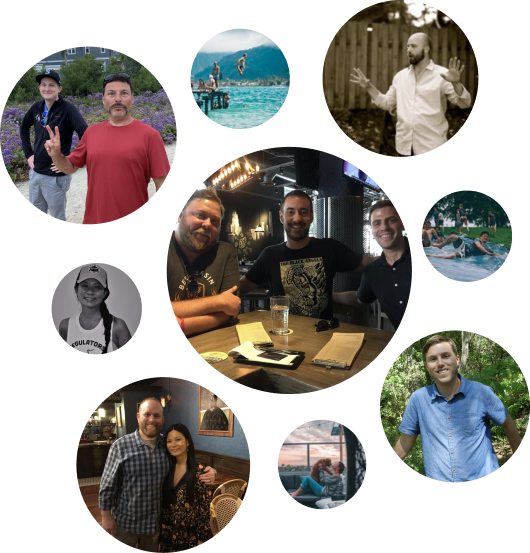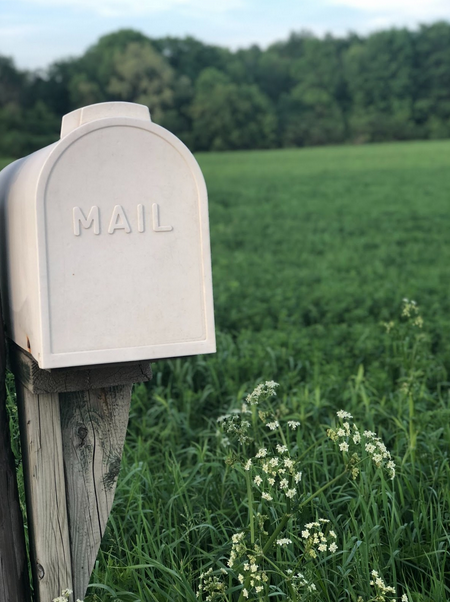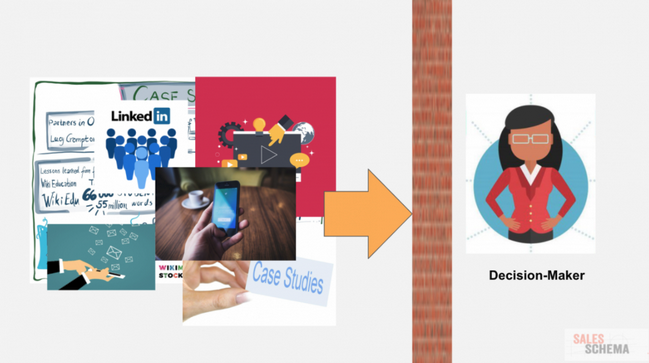About Us
The short story
Founded in 2014, Sales Schema is a fractional new business team for marketing agencies and B2B companies, specializing in outreach and appointment-setting by way of a proprietary approach called Relationship Sales At Scale ™.
At the time of this writing, we’ve generated more than 10,000 prospect relationships and won millions in lifetime revenue for our clients.

Leadership Team
The Long Story
In cliched fashion, Sales Schema was founded by a guy on a laptop in Saigon.
It was October 2014, I was 27, and I had quit my sales job several months before. After traveling around South East Asia with my girlfriend at the time, I needed to work on my next career move.

While I didn’t have a ton of braggable bonafides around which to build a business, I spent some time in the marketing agency and sales trenches.
Out of college at UC Santa Cruz, I landed in New York, and I worked in catering. If you attended a six-figure Wall Street bar mitzvah in 2010, there’s a decent chance you snagged a knish from my tray. The city hazed me – I lived in a railroad apartment in Bushwick, Brooklyn, I got bed bugs, and my roommate was a mechanic who shouted death threats in his sleep.
After failing to land a bartending gig because I had zero connections or tattoos, and meandering through a couple semi-predatory internships, I landed a job as an account coordinator at a New Jersey-based social media agency.
Social was still new and cool back then, and agencies could secure massive engagements via buzzwords alone. I managed a facebook wall for a large consumer electronics brand, and if your headphones broke in 2011 and you complained on FB, there’s a decent chance you got to read my copy-pasted apology.
I commuted everyday from Astoria, Queens to New Jersey via the Port Authority Bus Terminal, and every New Yorker reading this is probably groaning right now, so I started looking for something better.
From a Craigslist ad I landed my next job as the first employee and account manager at a midtown animation studio called IdeaRocket (to this day, I respect Craigslist, and we throw it into the mix with every hiring round).
IdeaRocket is where I cut my teeth. I worked in a hybrid role, shuffling back and forth between sales and account management. I even got to contribute a metaphorical concept or two to the animated videos – “What if we used a lightbulb to represent an idea??” In the early years, we worked out of one of the first WeWork buildings in midtown, and the glass office walls reverberated my incessant sales calls throughout the floor.
At that time, I was task switching constantly between clients and prospects, all while glued to my inbox. My sales process was like free jazz, but I thought that was ok because I didn’t want to over-plan and come off as “sales-y”. My mindset was that if a client didn’t see the value right away, what more could I do? In reality, I was a glorified order taker, and unless a prospect had already decided to buy from us, most deals evaporated.

Predictably, revenues and cash suffered, and we hit a number of ‘feast and famine’ cycles. I scrambled to win projects, we got busy, then there were no new opportunities in the pipeline, so I’d scrambled again, and so on. We invested so much creative energy on our clients, but we rarely stopped to focus on ourselves. We were up against the Cobbler’s Children Problem, something that our team continues to see at least five times weekly in agencies and service businesses.
One day, our founder Will Gadea, who’s still a close friend, asked if I wanted to undergo sales training. I was skeptical because I didn’t think traditional sales training would help me sell a complex creative services product.
But I humored Will, and of course he was right. Coached by a tenacious entrepreneur named Mike Gansl, I stopped making as many dumb mistakes, like sending proposals out via email without a presentation call, and we started to fine tune a process.
Before I bounced between tasks, now I started to focus on sales or client service for large uninterrupted blocks of time. My process went from jazz to science, and I started using a script, asking specific questions, preventing the usual objections, and maintaining the same process in almost every situation. I built a pipeline, reduced emotion, and chose opportunities carefully, like a professional poker player would.
We leaned into many sales channels like paid ads, outbound, PR, trade shows, and early morning networking groups, and I led thousands of sales calls over a few short years. Through unrelenting trial and error, we developed an effective process for selling a ‘big ticket’ creative services offering, where the value is abstract.
By 2014, we secured 16 Fortune 500 accounts and had gone from nearly-zero to seven figure revenues. We upgraded from WeWork to our own bright and sunny office space in Midtown Manhattan. I helped secure a deal with Showtime and we produced the eighth season show opener for Weeds, starring Mary Louise Parker, and we were nominated for an award at SXSW. I was making six-figures as a 25 year old, having fun, and working in a creative and upbeat environment.
That’s when a little bird named Tim Ferris started chirping into my ear via his book The Four Hour Workweek. Adding to that, over drinks one evening a friend told me about his success making four-figure monthly passive income from self-publishing business books, and he encouraged me to give it a shot. The phrase “online passive income” sounded to me the way that “gold at Sutter’s Mill” must have sounded to 19th century prospectors, but I was unsure.
“I can’t publish a book!” I said. Then he asked if I wrote papers in college, and since I wrote a forty-page thesis, it clicked that I could probably pull off this whole self-publishing thing.
Zoom forward to that coffee shop in Saigon. I went to work on what would become Mastering Account Management, a bite-sized handbook for those in hybrid sales/client service roles.
Sales Schema back then was homebase for my books, including three follow-up publications, and for my sales consulting practice. From the success of Mastering Account Management and networking connections in previous lives, I landed a few early consulting clients.
Our clients then and now are busy owners and executives selling complex products and services. They typically survive and build their companies on the strength of their rolodexes, but they hit a ceiling from an over-reliance on referrals and organic new business, which makes it almost impossible to grow, get acquired, or simply choose their clients instead of the other way around.
Worse, they are often facing ‘The Cobblers’ Children Problem’, where they dump most of their bandwidth into fulfillment and have little left to sell themselves.
Sales Schema went from a coaching and consulting practice to offering courses and info products, and there were some early wins for clients, but we hit roadblocks.
Regardless of what my clients needed, what they understandably wanted was a done-for-you solution.
So I pivoted Sales Schema to what would become a fractional new business team focused on targeted outreach and appointment-setting. I had a ton of experience prospecting, so I knew that landing appointments is a huge pain point for busy salespeople, who should spend 99% of their time building relationships and persuading, not opening doors.
Outbound sidebar.

We focus on outbound, and as a new business channel, it has its pros and cons, like everything in life. First, the rub:
With outbound, you’re typically reaching prospects at an earlier stage of the buyer journey than you would with inbound. While you will get lucky and find prospects actively searching for a solution, most people will take meetings with you because they are curious and/or experiencing some kind of pain. After all, at any given time, only 3% of the market is actively searching for a solution (source).
At the same time, the pros match the cons: since you build the relationship earlier in the buyer journey, you guide your prospect’s decision-making process by putting something new and compelling on their plates instead of getting stuck in a ‘pick me’ situation, which can be a resource-wasting race to the bottom. Even better, outbound scales to the size of your entire market.
Finally, with outbound, you’re in control: by learning how to tastefully open doors, you get to be deliberate about your future clients and thus the future of your business. Also, you’re less beholden to the whims of Google, LinkedIn, and other platforms that can tank your business overnight with unexpected policy or algorithm changes.
Too much noise…

In the early days, working with a variety of freelancers and partners, we tried every outreach tactic and channel under the sun to land meetings for our clients with decision-makers in mid-to-large organizations. We worked on behalf of our clients directly as the ghost in the machine.
There were some big wins: we got meetings in high places and helped clients secure deals that amounted to millions in revenue. We won Fortune 500 accounts and in one case a prominent beverage brand that claimed they absolutely never work with marketing agencies like our client’s.
But overall the theme was crickets, and sometimes weeks would go by without meetings. Our clients were irritated, and I absolutely dreaded my inbox each morning. One winter, I had to fire a friend, and I got shingles (sidenote: it’s interesting how fast the doctor was able to make the diagnosis).
I looked for help and outside perspectives, and I compared notes with friendly indirect competitors and others in our space, and they would say, “Don’t worry, it’s a high-churn business!” That might’ve worked for them, but not us – we are not cut out for a high-churn business model, and we tried everything to improve campaigns, client satisfaction, and build long haul partnerships.
Stuff we tried:
- Set up complex funnels involving email, LinkedIn, phone, and direct mail.
- Bought access to expensive lists and databases.
- Tinkered with dozens of SaaS products.
- Hired almost every email deliverability expert we could find.
- Hired a team of “dialing for dollars”-style sales reps to chase prospects.
- Constructed fancy reports to show how much work we were doing.
Some experiments kind of worked for a while, but nothing was sustainable.
Thankfully, our offering is like a giant satellite pulling in data, and we were able to lap up a constant stream of market feedback in the form of email and LinkedIn responses from a diverse array of decision-makers.
Over time, the feedback became consistent, clear, and at this point unsurprising:
There is too much competition and noise.
This is especially true when it comes to marketing agencies, digital services, and any company that can be started from a laptop (kind of like this origin story!), and these sorts of companies are becoming a huge percentage of the economy.
Rewriting the playbook.
This observation was driven home a few years ago when we were partnered with a Bay Area-based branding agency. The agency had been around for nearly twenty years and had strong specialization in the tech industry, which they presented effecitvely on their site and portfolio, and the founders were well-connected and strong at sales.

At the same time, the company survived on referrals alone, and since the two partners were actively looking to get acquired, they knew they had a problem: they needed to build at least one scalable new business channel in a relatively short period of time.
We ran the usual sales tactics: we exported a list of right-fit CMOs, and conducted a/b tests on outreach copy across different channels like email, LinkedIn, and phone.
After four months and thousands of touch points, we had generated only a handful of lukewarm prospects. We presented their services and case studies in every possible way, and nothing was working.
We were dumbfounded. Given this agency’s strong specialization and bonafides, if the usual tactics didn’t work for these guys, who would they work for?
Then we thought, what if the old playbook is outdated?
We wondered if all of the sales tactics, drip sequences, automated funnels, and allegedly all-knowing databases were essentially doing a version of the same thing by hard-selling skeptical prospects in a low-trust environment.
Here’s how that happens…
Most B2B salespeople simply pull lists from pre-built databases, and there are a few big problems with this:
- The data is often bad, so you are reaching out to the wrong people and no one responds (or they tell you to f&*k off, which hurts deliverability and ensures no one else sees your messaging).
- Prospects are inundated and overwhelmed overall.
- A raw list alone can’t help you de-risk a conversation…
The hard part is not finding contact info on a decision-maker, it’s getting her to invest time with you.
Sure, you might send a case study over email, connect on LinkedIn, then spend twenty minutes drafting a meeting request, but is that actually enough to de-risk a conversation?
There is so much noise and competition that a busy decision-maker rarely reads one-line of your email before chucking it into the spam box. Even when they do read a pitch and aren’t annoyed, the most likely response is, “Thanks, I’ll put you in a file for later.”
Everyday it’s getting cheaper and easier for every salesperson on earth to find contact information and reach out to anyone they want, and since there are more emails than ever, spamming a big list does not work anymore.
Like paid media, direct mail, and other marketing channels, outbound is becoming a mature market, and it takes more time, effort, and personalization to make it work than it did several years ago.
Strong positioning and specialization can help to an extent, but increasingly this is not enough to cut through the noise, as we experienced with our client.
So we decided to take our client tribal.
We pitched them an idea for tapping into their extended personal network, or “tribe”, and thankfully they were patient and gracious with us. They greenlighted the idea, which ultimately paid off massively for them.
Instead of yelling at a wall by chasing and pitching decision-makers, we thought creatively about how we could break our client into the right accounts, even if the exact title, or entry point, might be different than the usual role they were used to.
We built a custom list of C-levels and VPs who used to work for a Fortune 500 account with whom our client was partnered, and we sent a simple three-line email paraphrased here:
Hey Lisa, how have you been? Saw you used to work at IBM, and we did some great work for them over the years, so maybe we crossed paths. Looks like you’re doing compelling work at Oracle, and I would love to see how we might be able to collaborate. Open to a call?
What was cool about this approach is that it gelled with how most executives “work their networks” when they have the rare two hour block to do personalized outreach, but without the tediousness, which breeds inconsistency. After all, over-personalization has diminishing returns – you might spend an afternoon writing twenty beautiful handcrafted love letters to your prospects, but maybe your timing is off or you can’t break through the noise, and your time is wasted.
The big difference was that we found a way to do relationship-driven outreach at scale.
The results were incredible. On a list of around one thousand, we saw 60%+ open rates and a 10-20% response rate, compared against the usual sub-three-percent rates many large campaigns experience.
Better yet, while most campaigns are strewn with irritated “go aways” from prospects, almost all the responses were warm and positive. This translated into dozens of quality meetings, and eventually a huge deal with one of the largest financial services organizations in the US. Our client went on to meet their goal and get acquired by a large consulting firm (not all because of us!).
Relationship Sales At Scale ™.
From this experience and similar wins, over time we moved almost all of our campaigns to this model, which we call Relationship Sales At Scale ™.

With Relationship Sales At Scale (™) the work is front-loaded on crafting distinct and creative campaigns, which might last anywhere from a few weeks to several months.
Just like in dating, instead of complex funnels and over-persistence, we avoid looking like we are trying too hard, and we typically use just one channel, like email, and one touch point per prospect.
The hard work lives in crafting relationship-driven campaigns that will cut through the noise and writing compelling copy, often designed to look natural and rough around the edges.
By far, we spend the most energy identifying specific prospects who share a commonality with our clients. We sometimes get crafty with this approach, including one campaign where we identified Fortune 500 C-suite leaders who, like our client, played tennis in college.
Our team encompasses researchers, account managers, strategists, and strategic partners working to generate constant opportunities for our clients so they can keep their sales pipeline full, no matter what.
Since 2014 we’ve partnered with more than 200 organizations, secured more than 10,000 prospect relationships for clients, and generated millions in lifetime revenue. We also host The Digital Agency Growth Podcast, where I interview thought leaders and ask meandering questions that occasionally make sense. Guests have included Rory Sutherland (Ogilvy), Drew McLellan (The Agency Management Institute), Nancy Lyons (Clockwork) , and Niel Robertson (Influence.co).
Over the years with the help of a stellar team, I’ve been fortunate enough to guide Sale Schema in the direction I think the business world is moving, which is along the axis of three competing forces:
- Tribe-based trust.
- Personalization.
- Scale.
Thanks for reading and we’re excited to see how we can help your business grow.
Sincerely,
Dan Englander
CEO and Founder, Sales Schema
Latest from
The Digital Agency Growth Podcast

Holiday Thought Exercise: “Is it Me or The Market?” [Nick Petroski encore]
https://youtu.be/SboAQQ3L5pg if you’re using the holiday break to plan for a strong Q1, this conversation will reshape how you think about pipeline. [this is an

Storytelling, Trust, and the Long Game of Agency Growth (with Alex Marshall)
https://youtu.be/fBsIw1xH9Ds What actually drives agency growth when pipelines are noisy, buyers are skeptical, and everyone sounds the same? In this episode, Dan Englander sits down

Why Most Agencies Lose Q1 (And How You Won’t)
Want the full presentation with visuals? Go here What if the agencies that crush Q1 aren’t working harder in January, they’re making one or two
